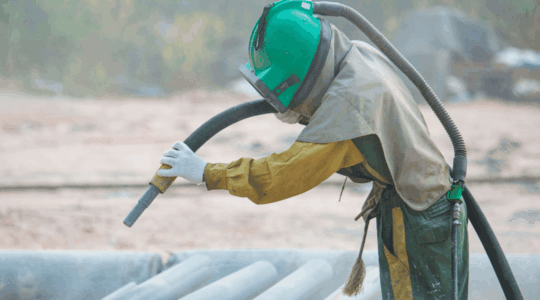Loss Control
Use Culture of Safety to Combat the Great Resignation
January 18, 2022
In November 2021, 4.5 million American workers walked away from their jobs, the highest quit rate since the Labor Department began tracking this information back in 2000. This shift in employment patterns has become known as “The Great Resignation,” a phrase coined by Texas A&M University organizational psychologist Anthony Klotz.
The pandemic has caused many Americans to reflect on their employment situation. In an NPR interview, HR advisory firm Humu CEO Laszlo Bock noted that during the pandemic, it became apparent that those now labeled “essential workers” often have been treated as “essential jobs” rather than as human beings. Until the labor shortage became so severe, workers in many industries had been treated as easily replaceable assets.
“I have serious, documented health issues but management is making me come into the office instead of letting me work from home during this pandemic. Why? They don’t have a problem with me working online from home all hours of the night and on weekends to keep up with my workload.”
Given the severity of today’s labor shortage, it is more important than ever for employers to use everything at their disposal to retain their existing employees. One tool that is sometimes overlooked is a culture of safety.
Culture of Safety: A Differentiator in the War on Talent
Investing in a strong safety program signals to employees—and prospective job candidates—that your organization cares for them on a human level. Of course, safety is good for all aspects of business:
- Trust. Putting processes and tools in place to keep people safe shows that the organization can be trusted to care for them.
- Productivity. Keeping people safe on the job means work gets done. Eliminating preventable work-related injuries and illnesses helps maintain a full staff and prevents healthy employees from being overworked.
- Morale. Being able to work comfortably and without fear of injury or preventable illness improves positive feelings about the workplace.
- Loyalty. When employees see that you care and protect them, they are more likely to stay with the company—and to tell others.
- Communication. When employees see that you care, they may be more comfortable voicing concerns, giving you the opportunity to address issues before they become problems.
Elements of a Strong Safety Culture
The specifics of each organization’s safety program will differ based on their needs. A manufacturing plant has different safety concerns than an ad agency. In-person work poses different challenges than remote/online work. But there are aspects of a strong safety culture that are shared across all organizations:
- Top-Down Support. Management must walk the talk and be as accountable for safety as everyone else in the organization. Managers, as well as employees, must know, understand and consistently adhere to all safety policies and procedures.
- Communication. Policies, procedures and expectations must be documented, reviewed and updated regularly, and shared consistently and often throughout the organization, including during onboarding. Further, organizations could consider conducting one-on-one safety interviews with key employees to learn which safety policies and procedures are working or not working in specific job roles.
- Ongoing Training. Safety isn’t a “one and done” activity. Regular safety reviews and training are an important part of keeping safety top of mind.
- Accountability. Issues need to be documented and resolved. If gaps are discovered in how policies or procedures are being applied, more training may be needed.
- Remaining Current. As the business environment changes, safety protocols may need to be added or revised. Safety is more than adhering to an OSHA checklist; it involves proactively reviewing the business to address potential issues before they can become problems.
Don’t Forget Safety in Remote Work Environments
The emergence of the pandemic threw all sorts of unanticipated challenges at employers. For offices, it meant that many employees suddenly began working from home on at least a part-time basis. When the pandemic ends, will employees want to go back to the office full-time—or at all?
What would make employees comfortable when considering returning to the workplace? Top three global responses: adherence to safety protocols, air quality, and facility cleanliness.
Source: Steelcase Global Report: Changing Expectations and the Future of Work
Many employers have realized that at least some employees can work very productively from home. This means that companies are no longer confined to hiring just within their current corporate geographic footprint. For them, the labor pool has expanded. The opportunity to work remotely is another benefit employers can use to entice prospective employees.
However, it is important that the organization’s culture of safety extends to those working from home offices. Things like ensuring fire safety, eliminating trip and fall hazards, and paying attention to ergonomics should be considered. Also, corporate safety policies must be updated to reflect the changing nature of work.
To learn more, watch Remote Working Safety: Best Practices Video.
Resources
If you have questions about how to strengthen your safety program or engage your workforce, reach out to your Hylant service team member or contact us here.
If you would like to learn about assessing and addressing workplace safety risks during a pandemic, read this blog post: COVID-19 and Preparing to Reopen for Business.
The above information does not constitute advice. Always contact your insurance broker or trusted advisor for insurance-related questions.


